15.12.2019
- Largest carrier rocket in Chinese fleet understood to be standing by after setbacks
- On its maiden mission in November 2016, the rocket failed to reach the speed required for the early phase of the flight

A Long March 5 stands by at the Wenchang Space Launch Centre in Hainan. Photo: Xinhua
A Long March 5 rocket is expected to blast off from a site in southern China this month carrying not only a next-generation communications satellite, but the hope that the mission will restore pride in the programme after a series of setbacks.
One of the sources who confirmed the plan said that the atmosphere at Wenchang Space Launch Centre on the northern tip of Hainan Island was “so tense there seems to be a shortage of oxygen”.
The Long March 5 – also known as the CZ-5 – is the largest launch vehicle in China’s space fleet. It can carry 25 tonnes into low Earth orbit, typically 645-1,610km (400-1,000 miles) from the surface.
Engineers designed the CZ-5 to carry up to 32 tonnes, but it has not been tested with such a payload. If it could lift off with 32 tonnes, the CZ-5 would carry more than the US’ Delta IV Heavy, Russia’s Proton, and Europe’s Ariane 5.
But the CZ-5 is also the least reliable, as earlier missions showed.
On its maiden mission in November 2016, the rocket failed to reach the speed required for the early phase of the flight; still, extra booster fuel burned in the final stage lifted its satellite cargo into orbit and allowed China to declare the trip a success.
In the second flight a few months later, though, the main engine died minutes after take-off, and the rocket plunged into the sea.
In comparison, the Delta IV Heavy – first launched in 2002 – has made nine successful flights and one partial failure.
The setback of the CZ-5 dealt a huge blow to China’s space industry and national prestige. Before the failure, morale was high because China had just launched the world’s first quantum satellite and its astronauts had lived and worked in orbit for more than a month on the Tiangong space lab.
China was catching up to Russia and the United States with more that 20 space launches annually.
After the failure, however, many programmes were put on hold for quality and safety reviews.
In 2017, a mission to bring back lunar rock samples – the first since the US’ last Apollo mission in 1972 – was postponed. Without the CZ-5, construction of a Chinese space station was suspended and a plan to land a rover on Mars to explore areas untouched by the US was shelved.

Data from the second launch showed that a pump injecting high-pressure fuel into the rocket engine’s combustion chamber had failed, causing a sudden loss of thrust.
Scientists made the pump more reliable. It was a simple job that could have been done in a few months, but to be thorough engineers spent more than two years testing the device and the rest of the engine in costly ground experiments.
“The CZ-5 is probably the most exhaustively checked and verified model in Chinese history,” one researcher said.
The closer launch day comes, the more staff fear another failure, sources said. Wu Yansheng, the president and Communist Party secretary of the China Aerospace Science and Technology Corporation, flew to Wenchang last month to work with technicians.
The space specialist who has taken leading roles in China’s manned space, lunar exploration and military space programmes, spent two days on critical procedures, including the installation of a device that used sensors to correct the flight of the rocket, the corporation’s website said.
“The CZ-5 launch … is the biggest political [duty] of the corporation at present,” he was quoted as saying.
The mission team must be as careful as “walking on thin ice [or] standing by an abyss”, Wu said.
With pressure comes superstition. The Shijian-20, the satellite expected to go up on the next launch, was built on a new platform called the Dongfanghong 5, which could increase China’s satellite communications capacity from 20 to 300 gigabytes per second.
There were fears that when China launched a new platform there was a good chance that the mission would fail, because this had happened to an earlier Dongfanghong series. The phenomenon was given a name – shoufei mozhou, or first-flight curse.

Wu reminded the team that they were scientists. “You must break the shoufei mozhou,” he was quoted as saying.
China has made great advances in space exploration and technology. It put a rover on the far side of the moon and built the BeiDou system, which is bigger than America’s GPS and paved the way for the world’s most reliable and precise satellite positioning system.
China has carried out 29 launches so far this year, nearly the same as the US, European Union and India combined, but the gap between it and the US in terms of achievement has not narrowed.
SpaceX, the company created by Tesla founder Elon Musk, has tested the Falcon Heavy, a rocket with reusable engines that can take more than 60 tonnes into low-Earth orbit at a competitively low cost. The US operates three times as many satellites as China, and the People’s Liberation Army’s satellites were overshadowed by those the Pentagon used because most of the existing Long March rockets could only lift about 10 tonnes.
Once fully operational, the CZ-5 will play an important role in China-US rivalry in many areas, including military.
Liang Xiaohong, former head of the China Academy of Launch Vehicle Technology, said in a speech last year that the CZ-5 would strengthen the PLA Navy’s ability to track US aircraft carrier battle groups.
“They often come to the doorstep of China, such as the South China Sea, East China Sea and the Yellow Sea, and loiter. They don’t come to make friends, but to threaten,” he said.
A carrier group was as small as a grain of rice in the ocean, Liang said. The CZ-5 could launch a fleet of surveillance satellites that could help China track the movements of military targets for long-distance missile strikes if necessary.
“Otherwise they will eliminate us before we see them,” he said.
Quelle: South China Morning Post
----
Update: 21.12.2019
.
China prepares to launch Long March-5 rocket

Carrier rocket Long March-5 Y3 is seen at the Wenchang Space Launch Center in south China's Hainan Province, Dec. 21, 2019. The third Long March-5 rocket, China's largest carrier rocket, was vertically transported to the launching area at the Wenchang Space Launch Center in south China's Hainan Province on Saturday. It is planned to be launched at the end of December, according to the China National Space Administration. (Photo by Zhang Gaoxiang/Xinhua)
The third Long March-5 rocket, China's largest carrier rocket, was vertically transported to the launching area at the Wenchang Space Launch Center in south China's Hainan Province on Saturday.
The carrier rocket, coded as Long March-5 Y3, is planned to be launched at the end of December, according to the China National Space Administration.
Space engineers have conducted a general assembly and tests on the rocket after it was transported to Wenchang at the end of October.
It took about two hours to vertically transport the large rocket to the launching area of the center Saturday morning. Space engineers will conduct a final examination and tests on the rocket before the launch.
The upcoming flight of the Long March-5 rocket is regarded as a highlight of China's space sector this year, as the large rocket is the key to China's future space missions.
If the flight is successful, the carrier rocket will be tasked with launching China's first Mars probe and sending the Chang'e-5 lunar probe to the moon to bring lunar samples back to Earth. In addition, a modified version of the rocket, Long March-5B, will be used to construct China's space station.

Carrier rocket Long March-5 Y3 is seen at the Wenchang Space Launch Center in south China's Hainan Province, Dec. 21, 2019. The third Long March-5 rocket, China's largest carrier rocket, was vertically transported to the launching area at the Wenchang Space Launch Center in south China's Hainan Province on Saturday. It is planned to be launched at the end of December, according to the China National Space Administration. (Photo by Zhang Gaoxiang/Xinhua)
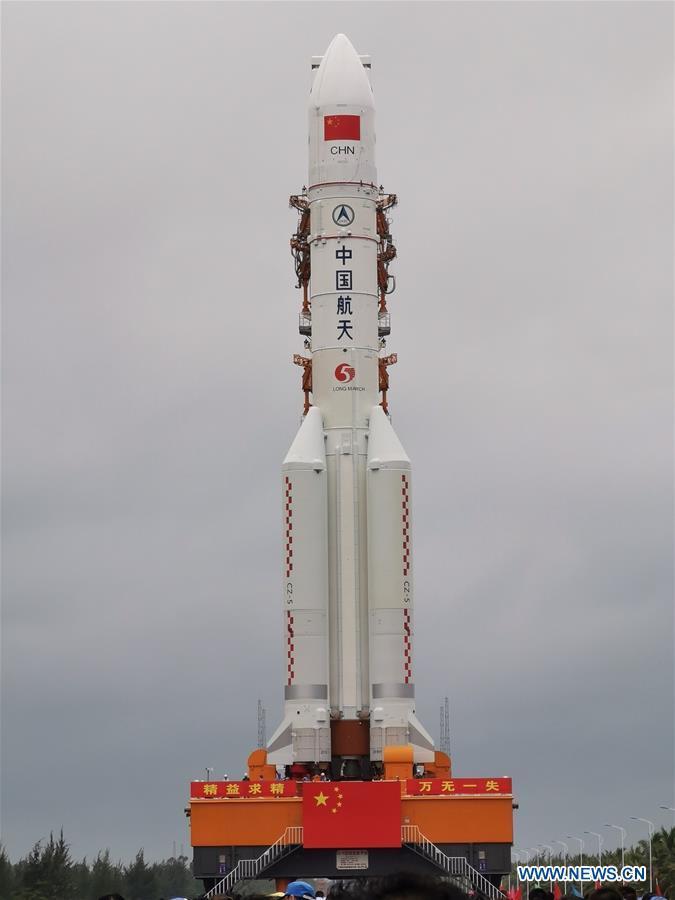
Quelle: Xinhua
----
Update: 26.12.2019
.
Long March-5 rocket readies for third launch

The Long March-5 rocket, China’s largest carrier rocket, lovingly known as "Fat Five," is scheduled for a launch on Friday morning, following a complete check and preparation by engineers. This will be the third time that a Long March 5 rocket has been launched and China's future space program is banking on the success of this mission.
The Long March-5 is the largest launch vehicle in China's space fleet, carrying 25 tons of payload into low-Earth orbit and is able to hold 14 tons for geostationary transfer orbit.
The rocket has had mixed success in previous launches - the first launch in 2016 was successful, but it failed its second launch in 2017, which was reportedly caused by an oxygen supply problem.
According to a report by Xinhua, a successful launch means that the rocket will be tasked with launching China's first Mars probe and sending Chang'e-5 lunar probe to the moon to return lunar samples back to Earth. Further modifications to the rocket will be used to construct China’s space station.
Quelle: CGTN
----
Update: 27.12.2019
.
China’s next Long March 5 rocket mission launch






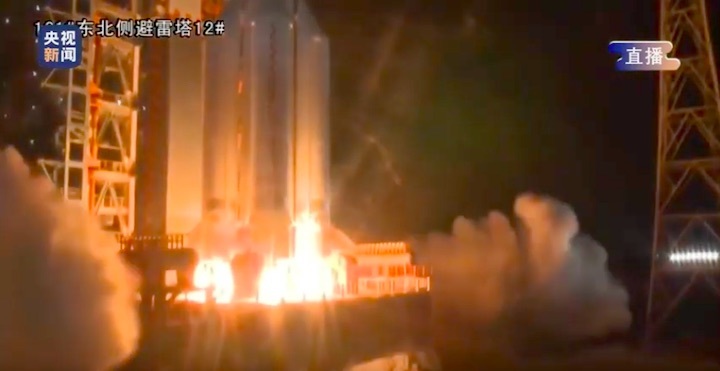
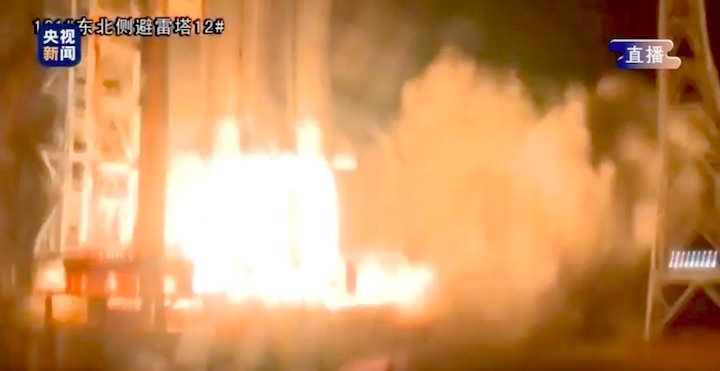

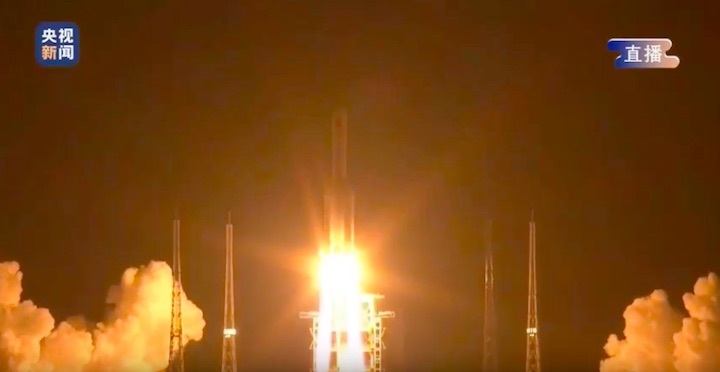

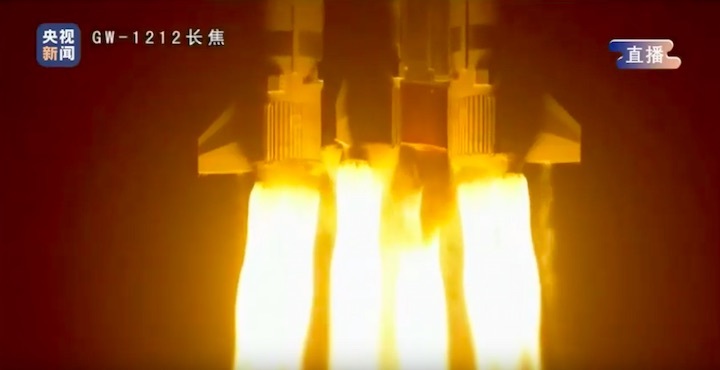



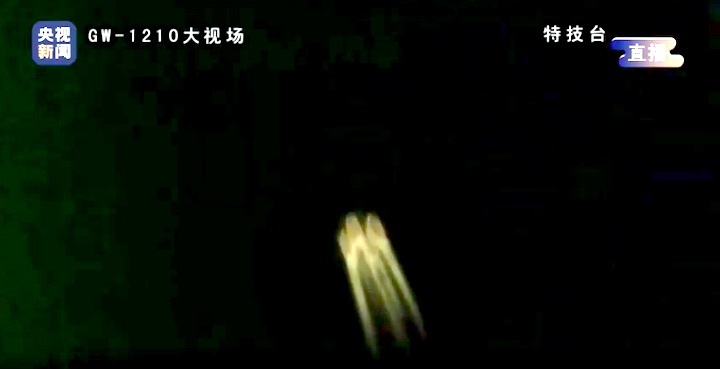











Quelle: CNTV

